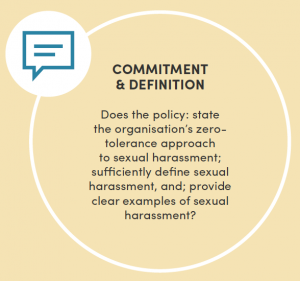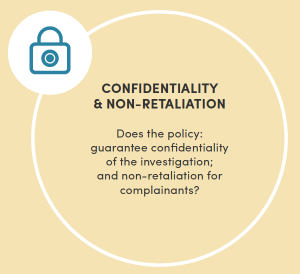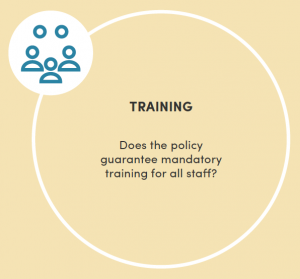Sexual harassment policies: a black box
Sexual harassment is a human rights violation in a context of unequal power relations such as a workplace and/or gender hierarchy.
A comprehensive policy is a fundamental first step towards preventing and addressing sexual harassment. Best practices on preventing sexual harassment are still in development and there is a limited set of practices on which to draw that have proven effective over the medium or long term.
Promising practices are emerging however. Drawing on these practices as well as existing global norms (see the recently adopted UN model policy), a range of public and private sector guidelines and peer-reviewed publications, GH5050 identified four elements of a comprehensive sexual harassment policy.
One-third (63/198) of organisations publish their sexual harassment policies online. An additional 12% (23/198) of organisations shared their internal policies and gave permission to code them.
Of the 86 policies reviewed, 52 organisations were considered to perform adequately by including at least two of the four essential best practices in their policies, including 25 that included all four elements of best practice.
Across the four best practice elements, a majority (77%) of organisations outline procedures for reporting and investigation of cases of sexual harassment, and three quarters (76%) guarantee both confidentiality and non-retaliation.
However, just over half (56%) outline a clear commitment to non-tolerance of abusive/harassing behaviours in the workplace, provide clear definitions of harassment and give examples of unacceptable behaviours. Of concern, fewer than half of the organisations in the sample (48%) stipulate the requirement for all staff to receive training on the policy.






